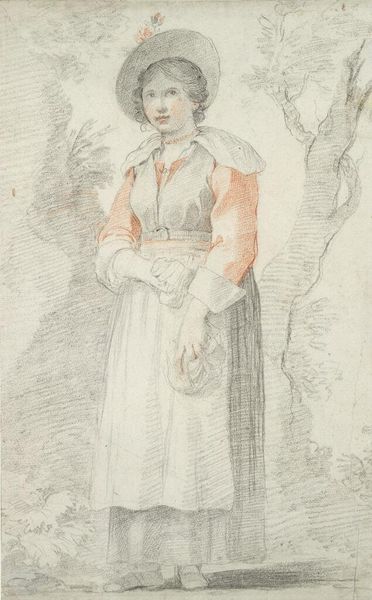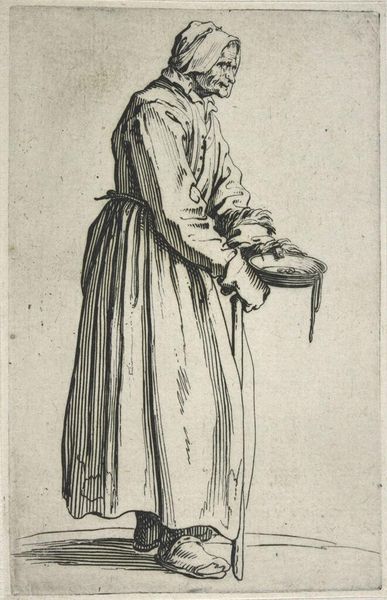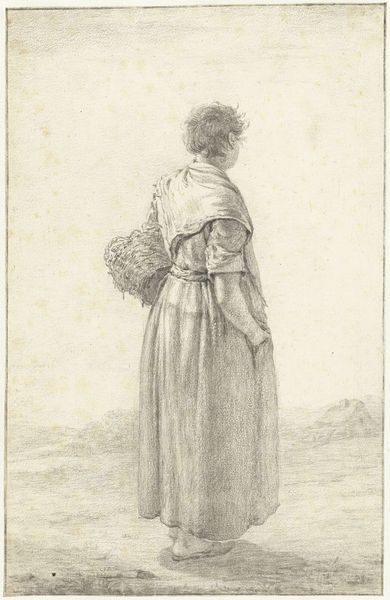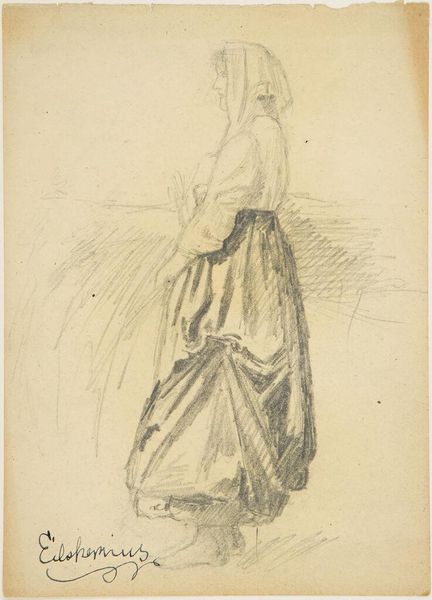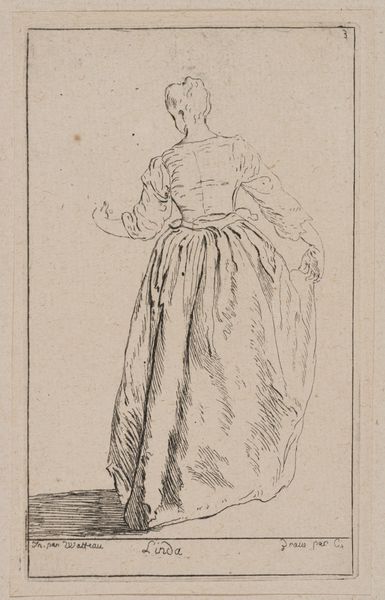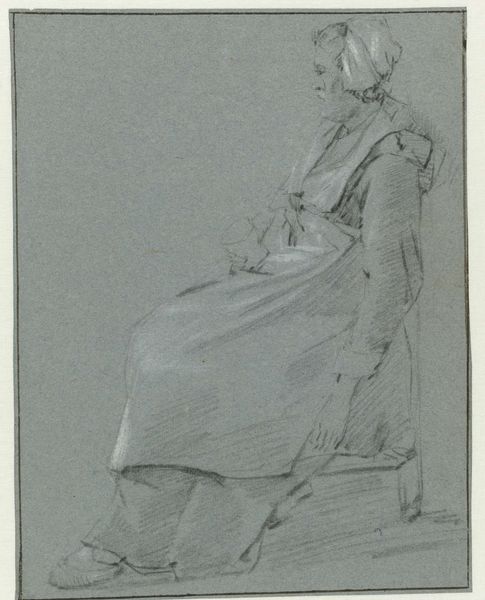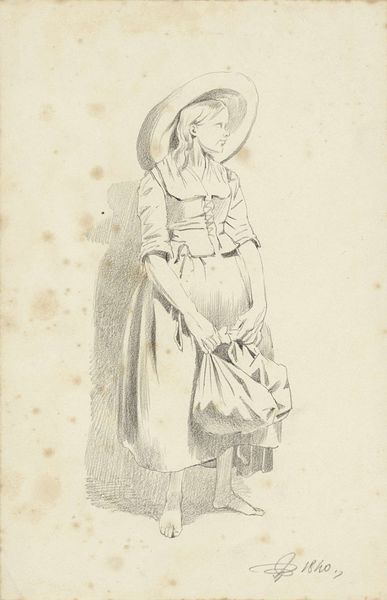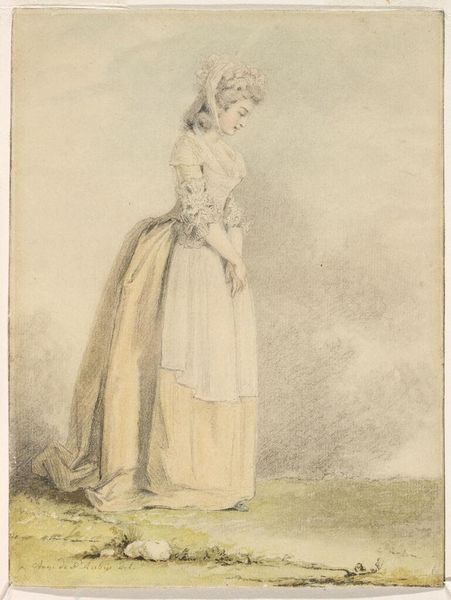
drawing, watercolor, pencil
#
portrait
#
drawing
#
figurative
#
pencil sketch
#
watercolor
#
pencil drawing
#
romanticism
#
pencil
#
portrait drawing
Copyright: Public Domain: Artvee
James Ward created this watercolor portrait of Mrs. Morland. The choice of watercolor on paper is significant, allowing for the swift capture of a subject with minimal staging. It speaks to a rising class of patrons who were eager to participate in the circulation of images. You can see that Mrs. Morland is depicted in domestic repose, wearing a simple white dress and turban. The artist used thin washes of diluted pigment to create delicate, translucent effects, particularly noticeable in the rendering of her dress. This technique allowed the texture of the paper to subtly show through, adding depth and a sense of immediacy to the work. The rapid application, indicative of the era, also speaks to the demands of a society keen on capturing likenesses for personal or commercial purposes. The medium's quickness allows for a looser handling of form, making it ideal for capturing fleeting moments or private sittings. So, while watercolor might be seen as less prestigious than oil, its accessibility made art more democratic, reflecting broader social shifts.
Comments
No comments
Be the first to comment and join the conversation on the ultimate creative platform.
